Phaeodactylum tricornutum as Fucoxanthin Biofactory Model and Hepatoprotective Effect of Encapsulated Spirulina and Fucoxanthin
Abstract
1. Introduction
2. Materials and Methods
2.1. P. tricornutum Cultivation and Lipid Production
2.1.1. Organism and Culture Conditions
2.1.2. Scale-Up Procedure
2.1.3. Harvesting
- Growth parameters
- Pigment analytical measurements
- Lipid extraction
- Stress
2.2. Hematoprotection Assay
2.3. Statistical Analysis
3. Results
3.1. Scaling-Up and Fucoxanthin Production by P. tricornutum
3.1.1. Environmental Parameters
3.1.2. Culture Growth
3.2. Pigment and Carotenoid Content
3.3. Characteristics of the Biomass Obtained
3.4. Extraction and Encapsulation
3.5. Hepatoprotective Assay
4. Discussion
4.1. Environmental Parameters and Culture
4.2. Hepatoprotective Assay
5. Conclusions
Author Contributions
Funding
Institutional Review Board Statement
Informed Consent Statement
Data Availability Statement
Acknowledgments
Conflicts of Interest
References
- How COVID-19 Is Changing Consumer Behavior—Now and Forever. Available online: https://www.mckinsey.com/~/media/mckinsey/industries/retail/our%20insights/how%20covid%2019%20is%20changing%20consumer%20behavior%20now%20and%20forever/how-covid-19-is-changing-consumer-behaviornow-and-forever.pdf (accessed on 16 February 2023).
- Indicadores de Salud 2020. Evolución de los Indicadores del Estado de Salud en España y su Magnitud en el Contexto de la Unión Europea. Madrid: Ministerio de Sanidad. Available online: https://www.sanidad.gob.es/estadEstudios/estadisticas/inforRecopilaciones/docs/Indicadores_de_Salud_2020.pdf (accessed on 16 February 2023).
- Liver Cirrhosis. Available online: https://gi.org/topics/liver-cirrhosis/ (accessed on 3 May 2023).
- Lomartire, S.; Marques, J.C.; Gonçalves, A.M.M. An Overview to the Health Benefits of Seaweeds Consumption. Mar. Drugs 2021, 19, 341. [Google Scholar] [CrossRef] [PubMed]
- European Council. Directive 2002/46/EC of the European Parliament and of the Council of 10 June 2002 on the Approximation of the Laws of the Member States Relating to Food Supplements (Consolidated Text); European Council: Strasbourg, France, 2002; Volume 183, p. 51. [Google Scholar]
- Kim, S.M.; Jung, Y.-J.; Kwon, O.-N.; Cha, K.H.; Um, B.-H.; Chung, D.; Pan, C.-H. A Potential Commercial Source of Fucoxanthin Extracted from the Microalga Phaeodactylum tricornutum. Appl. Biochem. Biotechnol. 2012, 166, 1843–1855. [Google Scholar] [CrossRef] [PubMed]
- Abdulqader, G.; Barsanti, L.; Tredici, M.R. Harvest of Arthrospira platensis from Lake Kossorom (Chad) and its household usage among the Kanembu. J. Appl. Phycol. 2000, 12, 493–498. [Google Scholar] [CrossRef]
- Lupatini Menegotto, A.L.; Souza, L.E.; Colla, L.M.; Costa, J.A.; Sehn, E.; Bittencourt, P.R.; Moraes Flores, É.L.; Canan, C.; Colla, E. Investigation of techno-functional and physicochemical properties of Spirulina platensis protein concentrate for food enrichment. LWT 2019, 114, 108267. [Google Scholar] [CrossRef]
- Wan-Loy, C.; Siew-Moi, P. Marine Algae as a Potential Source for Anti-Obesity Agents. Mar. Drugs 2016, 14, 222. [Google Scholar] [CrossRef]
- Englert, G.; Bjørnland, T.; Liaaen-Jensen, S. 1D and 2D NMR study of some allenic carotenoids of the fucoxanthin series. Org. Magn. Reson. 1990, 28, 519–528. [Google Scholar] [CrossRef]
- Pajot, A.; Hao Huynh, G.; Picot, L.; Marchal, L.; Nicolau, E. Fucoxanthin from Algae to Human, an Extraordinary Bioresource: Insights and Advances in up and Downstream Processes. Mar. Drugs 2022, 20, 222. [Google Scholar] [CrossRef]
- Dembitsky, V.M.; Maoka, T. Allenic and cumulenic lipids. Prog. Lipid Res. 2007, 46, 328–375. [Google Scholar] [CrossRef]
- Yamanaka, R.; Akiyama, K. Cultivation and utilization of Undaria pinnatifida (wakame) as food. J. Appl. Phycol. 1993, 5, 249–253. [Google Scholar] [CrossRef]
- Bohlin, K. Zur Morphologie und Biologie einzelliger Algen. Öfversigt Kongliga Vetenskadademiens Förhanligar 1897, 54, 507–529. [Google Scholar]
- Pudney, A.; Gandini, C.; Economou, C.K.; Smith, R.; Goddard, P.; Napier, J.A.; Spicer, A.; Sayanova, O. Multifunctionalizing the marine diatom Phaeodactylum tricornutum for sustainable co-production of omega-3 long chain polyunsaturated fatty acids and recombinant phytase. Sci. Rep. 2019, 9, 11444. [Google Scholar] [CrossRef] [PubMed]
- Kurniawan, R.; Nurkolis, F.; Taslim, N.A.; Subali, D.; Surya, R.; Gunawan, W.B.; Alisaputra, D.; Mayulu, N.; Salindeho, N.; Kim, B. Carotenoids Composition of Green Algae Caulerpa racemosa and Their Antidiabetic, Anti-Obesity, Antioxidant, and Anti-Inflammatory Properties. Molecules 2023, 28, 3267. [Google Scholar] [CrossRef]
- Cui, Y.; Thomas-Hall, S.R.; Schenk, P.M. Phaeodactylum tricornutum microalgal as a rich source of omega-3 oil: Progress in lipid induction techniques towards industry adoption. Food Chem. 2019, 297, 124937. [Google Scholar] [CrossRef] [PubMed]
- Mayer, C.; Côme, M.; Ulmann, L.; Chini Zittelli, G.; Faraloni, C.; Nazih, H.; Ouguerram, K.; Chénais, B.; Mimouni, V. Preventive Effects of the Marine Microalga Phaeodactylum tricornutum, Used as a Food Supplement, on Risk Factors Associated with Metabolic Syndrome in Wistar Rats. Nutrients 2019, 11, 1069. [Google Scholar] [CrossRef] [PubMed]
- Gammone, M.A.; Riccioni, G.; D’Orazio, N. Marine Carotenoids against Oxidative Stress: Effects on Human Health. Mar. Drugs 2015, 13, 6226–6246. [Google Scholar] [CrossRef] [PubMed]
- Marmot, M.; Bell, R. Social determinants and non-communicable diseases: Time for integrated action. BMJ 2019, 364, l251. [Google Scholar] [CrossRef]
- Maruyama, H.; Tamauchi, H.; Iizuka, M.; Nakano, T. The role of NK cells in antitumor activity of dietary fucoidan from Undaria pinnatifida sporophylls (Mekabu). Planta Med. 2006, 72, 1415–1417. [Google Scholar] [CrossRef]
- Oomizu, S.; Yanase, Y.; Suzuki, H.; Kameyoshi, Y.; Hide, M. Fucoidan prevents C epsilon germline transcription and NFkappaB p52 translocation for IgE production in B cells. Biochem. Biophys. Res. Commun. 2006, 350, 501–507. [Google Scholar] [CrossRef]
- Zhu, Z.; Zhang, Q.; Chen, L.; Ren, S.; Xu, P.; Tang, Y.; Luo, D. Higher specificity of the activity of low molecular weight fucoidan for thrombin-induced platelet aggregation. Thromb. Res. 2010, 125, 419–426. [Google Scholar] [CrossRef]
- Bustos, R.; Romo, L.; Yáñez, K.; Díaz, G.; Romo, C. Oxidative stability of carotenoid pigments and polyunsaturated fatty acids in microparticulate diets containing krill oil for nutrition of marine fish larvae. J. Food Eng. 2003, 56, 289–293. [Google Scholar] [CrossRef]
- Higuera-Ciapara, I.; Felix-Valenzuela, L.; Goycoolea, F.M.; Argüelles-Monal, W. Microencapsulation of astaxanthin in a chitosan matrix. Carbohydr. Polym. 2004, 56, 41–45. [Google Scholar] [CrossRef]
- Casado-Bañares, V. Encapsulated Oil. US20220007698A1, 12 January 2022. [Google Scholar]
- Andersen, R.A. Algal Culturing Techniques. J. Phycol. 2005, 41, 906–908. [Google Scholar] [CrossRef]
- Walne, P.R. Culture of Bivalve Molluscs: 50 Years of Experience at Conwy; Fishing News Books Ltd.: Farnham, UK, 1974; 189p. [Google Scholar]
- Henriques, M.; Silva, A.; Rocha, J. Extraction and quantification of pigments from a marine microalga: A simple and reproducible method. In Communicating Current Research and Educational Topics and Trends in Applied Microbiology; Mendez-Vilas, A., Ed.; Formatex: Badajoz, Spain, 2007; Volume 1, pp. 586–593. [Google Scholar]
- Solovchenko, A.; Merzlyak, M.N.; Khozin-Goldberg, I.; Cohen, Z.; Boussiba, S. Coordinated carotenoid and lipid syntheses induced in parietochloris incisa (Chlorophyta, Trebouxiophyceae) mutant deficient in Δ5 desaturase by nitrogen starvation and high light. J. Phycol. 2010, 46, 763–772. [Google Scholar] [CrossRef]
- Rebolloso, M.M.; Navarro, P.A.; Ramos, J.J.; Guil, J.L. Biomass Nutrient Profiles of the Microalgae Phaeodactylum tricornutum. J. Food Biochem. 2001, 25, 57–76. [Google Scholar] [CrossRef]
- Folch, J.; Lees, M.; Stanley, G.H.S. A simple method for the isolation and purification of total lipides from animal tissues. J. Biol. Chem. 1957, 226, 497–509. [Google Scholar] [CrossRef] [PubMed]
- Bath, R.K.; Brar, N.K.; Forouhar, F.A.; Wu, G.Y. A review of methotrexate-associated hepatotoxicity. J. Dig. Dis. 2014, 15, 517–524. [Google Scholar] [CrossRef] [PubMed]
- Shergy, W.J.; Polisson, R.P.; Caldwell, D.S.; Rice, J.R.; Pisetsky, D.S.; Allen, N.B. Methotrexate-Associated Hepatotoxicity: Retrospective Analysis Of 210 Patients with Rheumatoid Arthritis. Am. J. Med. 1988, 85, 771–774. [Google Scholar] [CrossRef]
- West, S.G. Methotrexate hepatotoxicity. Rheum. Dis. Clin. N. Am. 1997, 23, 883–915. [Google Scholar] [CrossRef]
- Abalde, J.; Cid, Á.; Fidalgo Paredes, P.; Torres, E.; Herrero, C. Microalgas: Cultivo y Aplicaciones. Available online: https://ruc.udc.es/dspace/bitstream/handle/2183/25013/Abalde_Julio_1995_Microalgas_cultivo_aplicaciones.pdf?sequence=2&isAllowed=y (accessed on 11 May 2023).
- Spilling, K.; Seppälä, J.; Tamminen, T. Inducing autoflocculation in the diatom Phaeodactylum tricornutum through CO2 regulation. J. Appl. Phycol. 2011, 23, 959–966. [Google Scholar] [CrossRef]
- Formosa-Dague, C.; Castelain, M.; Martin-Yken, H.; Dunker, K.; Dague, E.; Sletmoen, M. The Role of Glycans in Bacterial Adhesion to Mucosal Surfaces: How Can Single-Molecule Techniques Advance Our Understanding? Microorganisms 2018, 6, 39. [Google Scholar] [CrossRef]
- Parisa, H.; Wafâa, B.; Morteza, Z.; Bing, H.; Brigitte, M.; Ewa, L.; Aurélie, C.-M.; Gaëtane, W.-C.; Véronique, M.-J.; Gaël, B. Marchand Justine and Schoefs Benoît, Response of CO2-starved diatom Phaeodactylum tricornutum to light intensity transition, Phil. Trans. R. Soc. B 2017, 372, 2016039620160396. [Google Scholar] [CrossRef]
- Gómez-Loredo, A.; Benavides, J.; Rito-Palomares, M. Growth kinetics and fucoxanthin production of Phaeodactylum tricornutum and Isochrysis galbana cultures at different light and agitation conditions. J. Appl. Phycol. 2016, 28, 849–860. [Google Scholar] [CrossRef]
- Varela, J.C.; Pereira, H.; Vila, M.; León, R. Production of carotenoids by microalgae: Achievements and challenges. Photosynth. Res. 2015, 125, 423–436. [Google Scholar] [CrossRef] [PubMed]
- McClure, D.D.; Luiz, A.; Gerber, B.; Barton, G.W.; Kavanagh, J.M. An Investigation into the Effect of Culture Conditions on Fucoxanthin Production Using the Marine Microalgae Phaeodactylum tricornutum. Algal Res. 2018, 29, 41–48. [Google Scholar] [CrossRef]
- Fawley, M.W. Effects of Light Intensity and Temperature Interactions on Growth Characteristics of Phaeodactylum tricornutum (Bacillariophyceae). J. Phycol. 1984, 20, 67–72. [Google Scholar] [CrossRef]
- Bojko, M.; Brzostowska, K.; Kuczyńska, P.; Latowski, D.; Olchawa-Pajor, M.; Krzeszowiec, W.; Waloszek, A.; Strzałka, K. Temperature Effect on Growth, and Selected Parameters of Phaeodactylum tricornutum in Batch Cultures. Acta Biochim. Pol. 2013, 60, 861–864. [Google Scholar] [CrossRef]

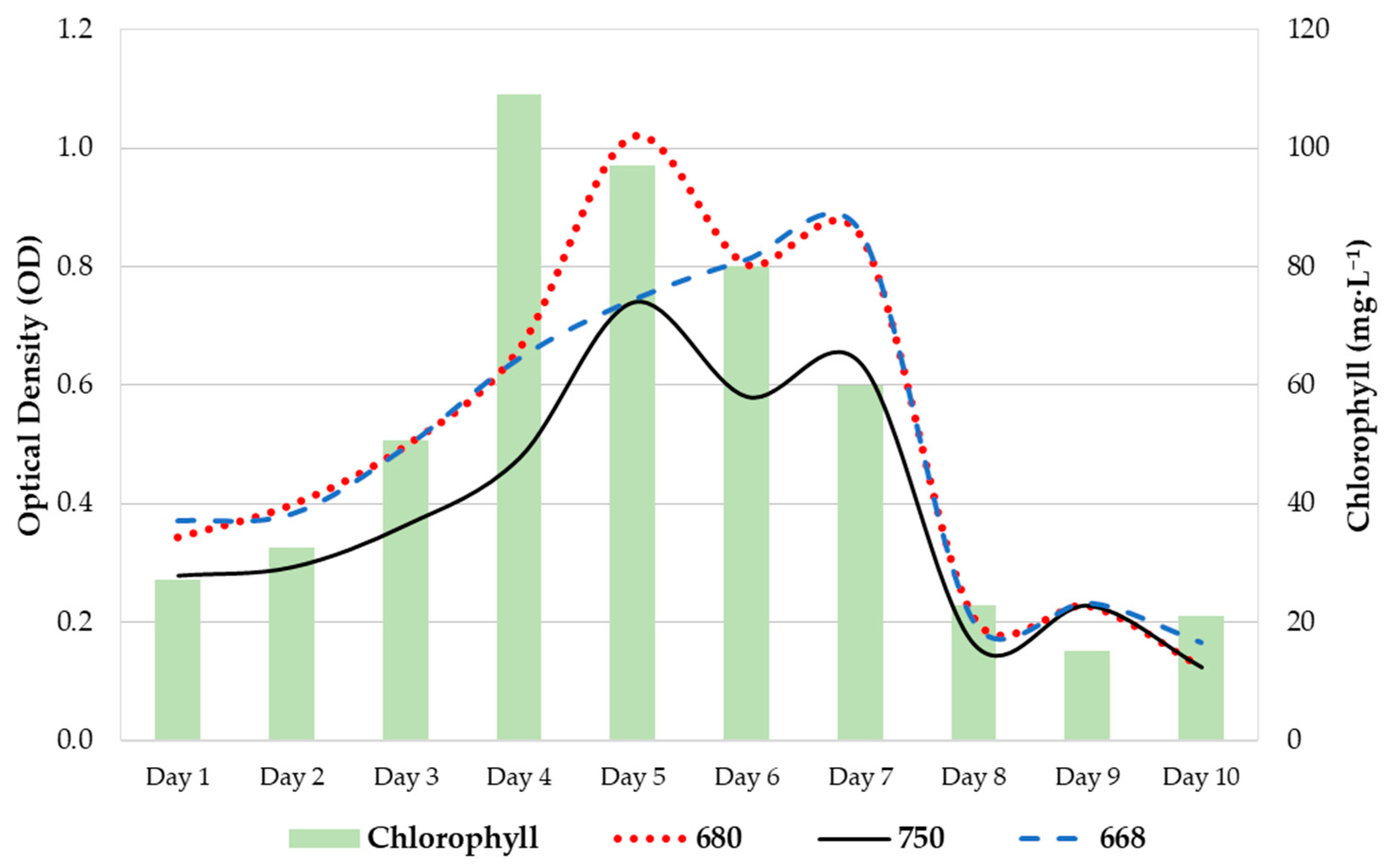
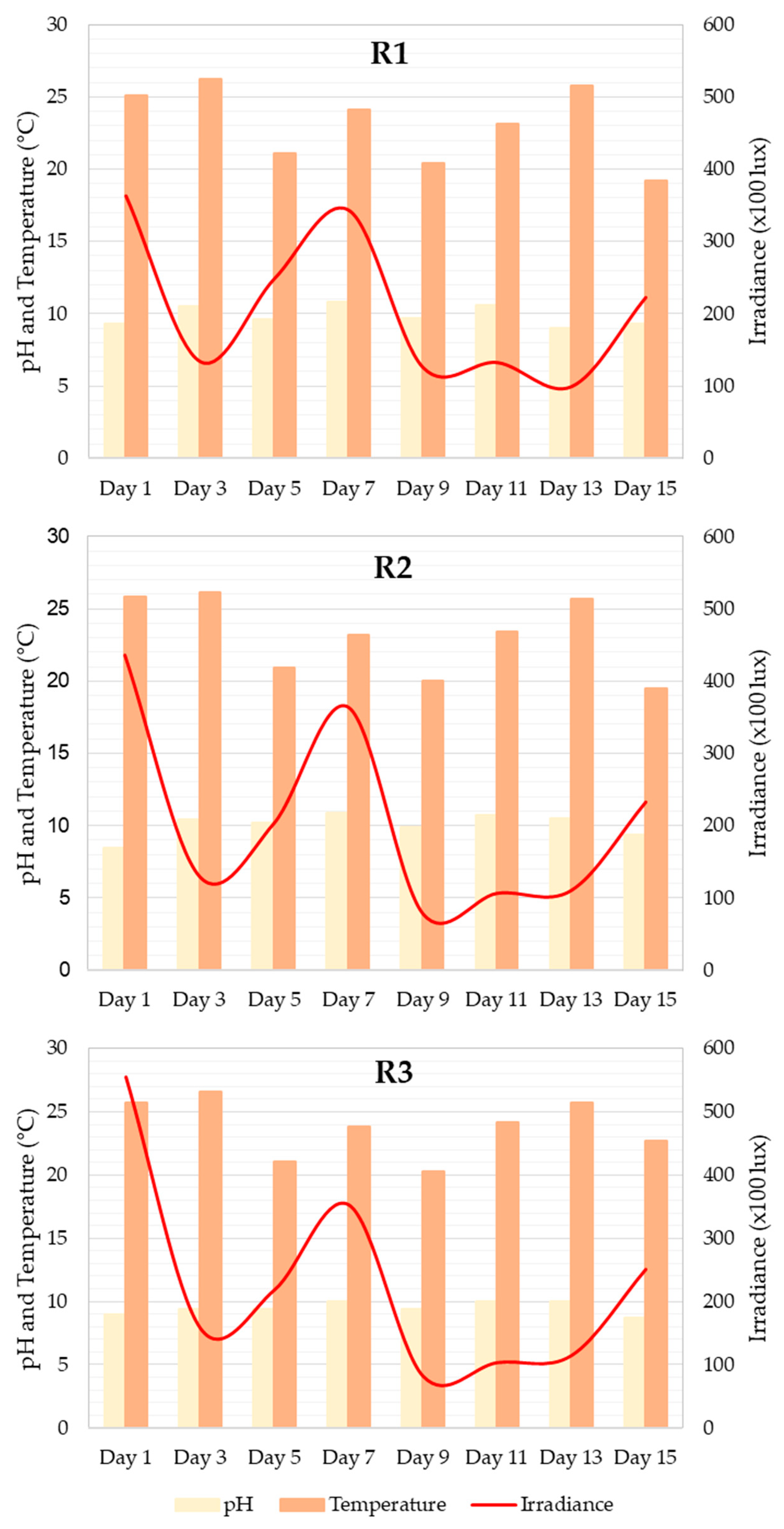
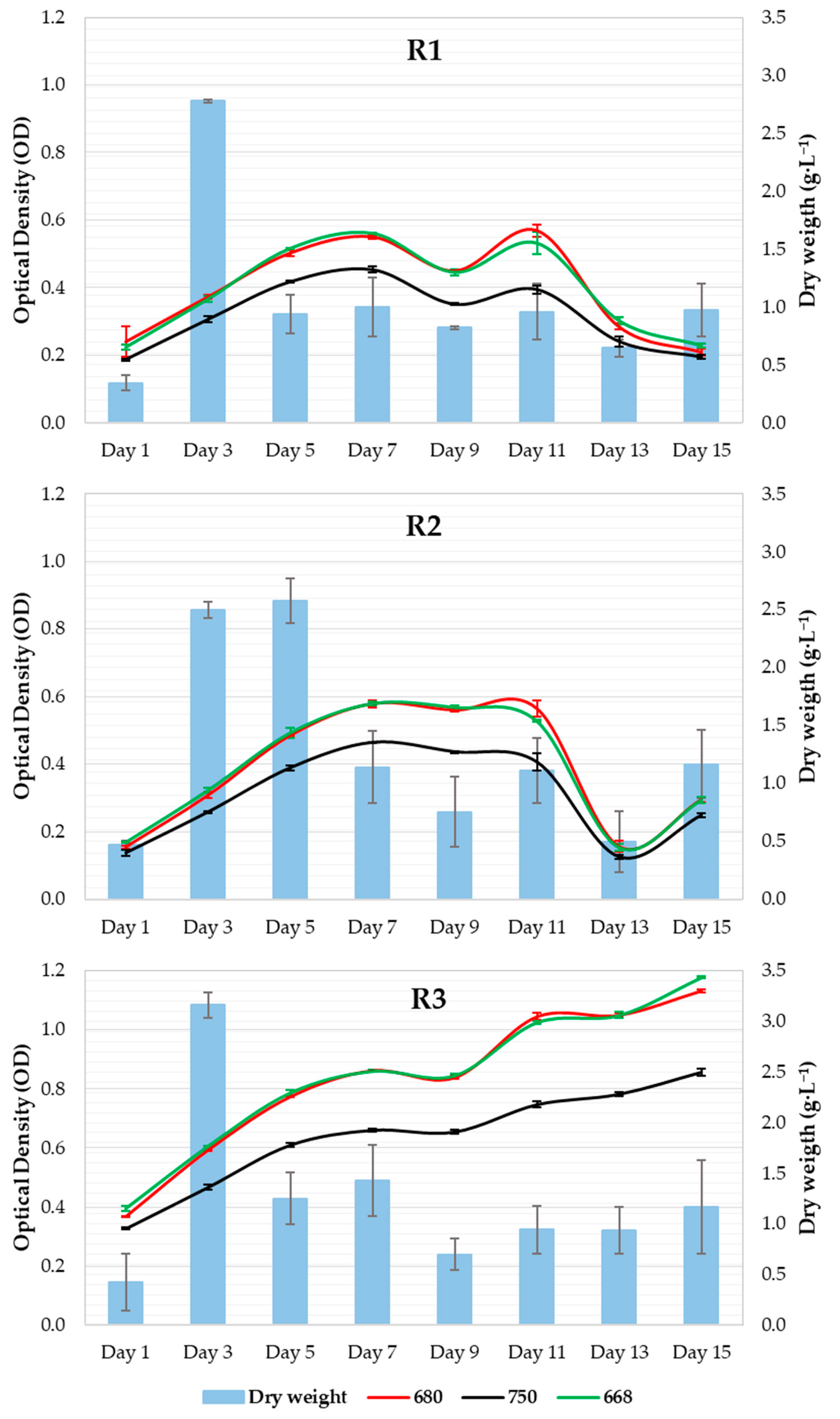
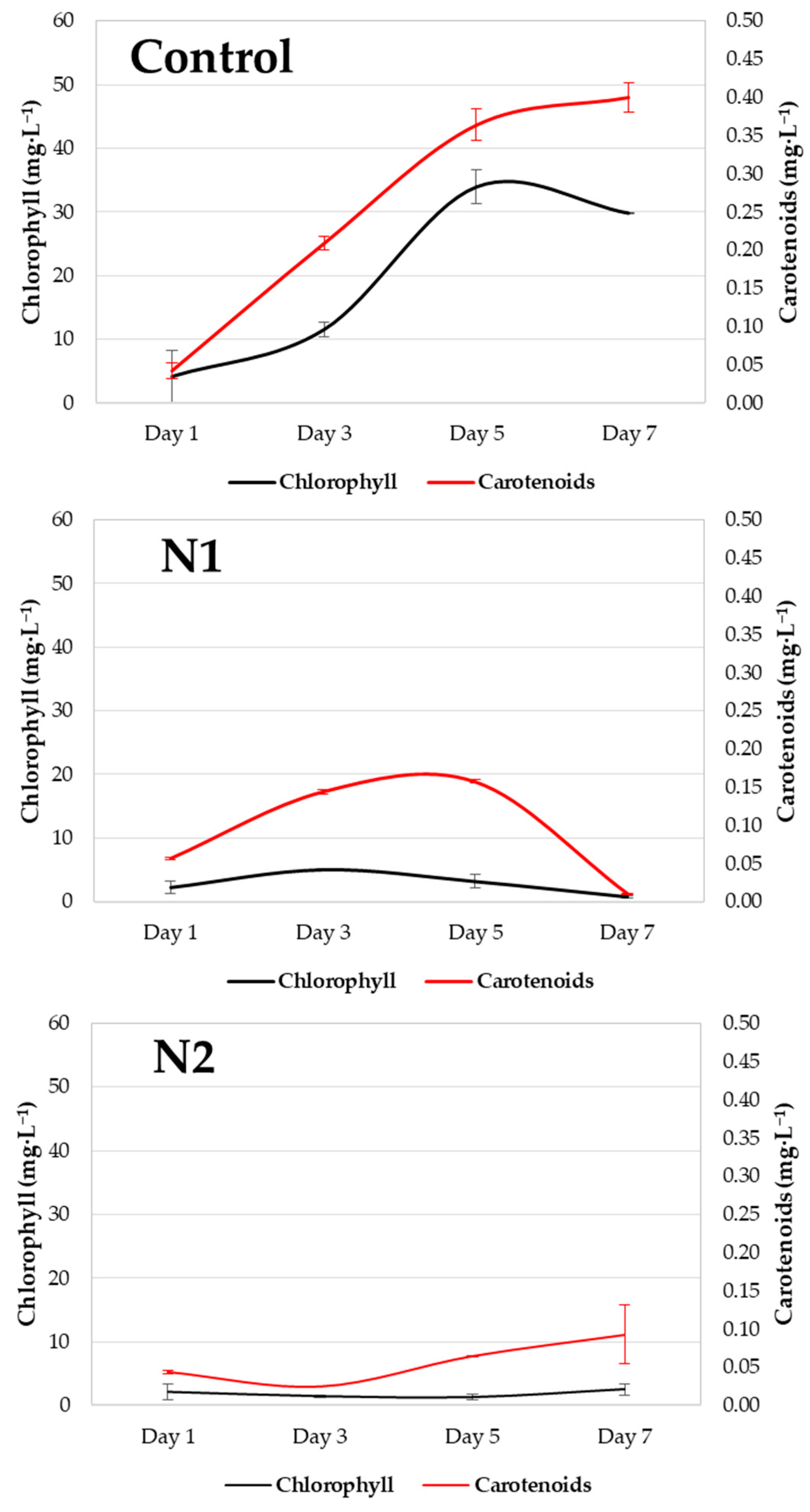
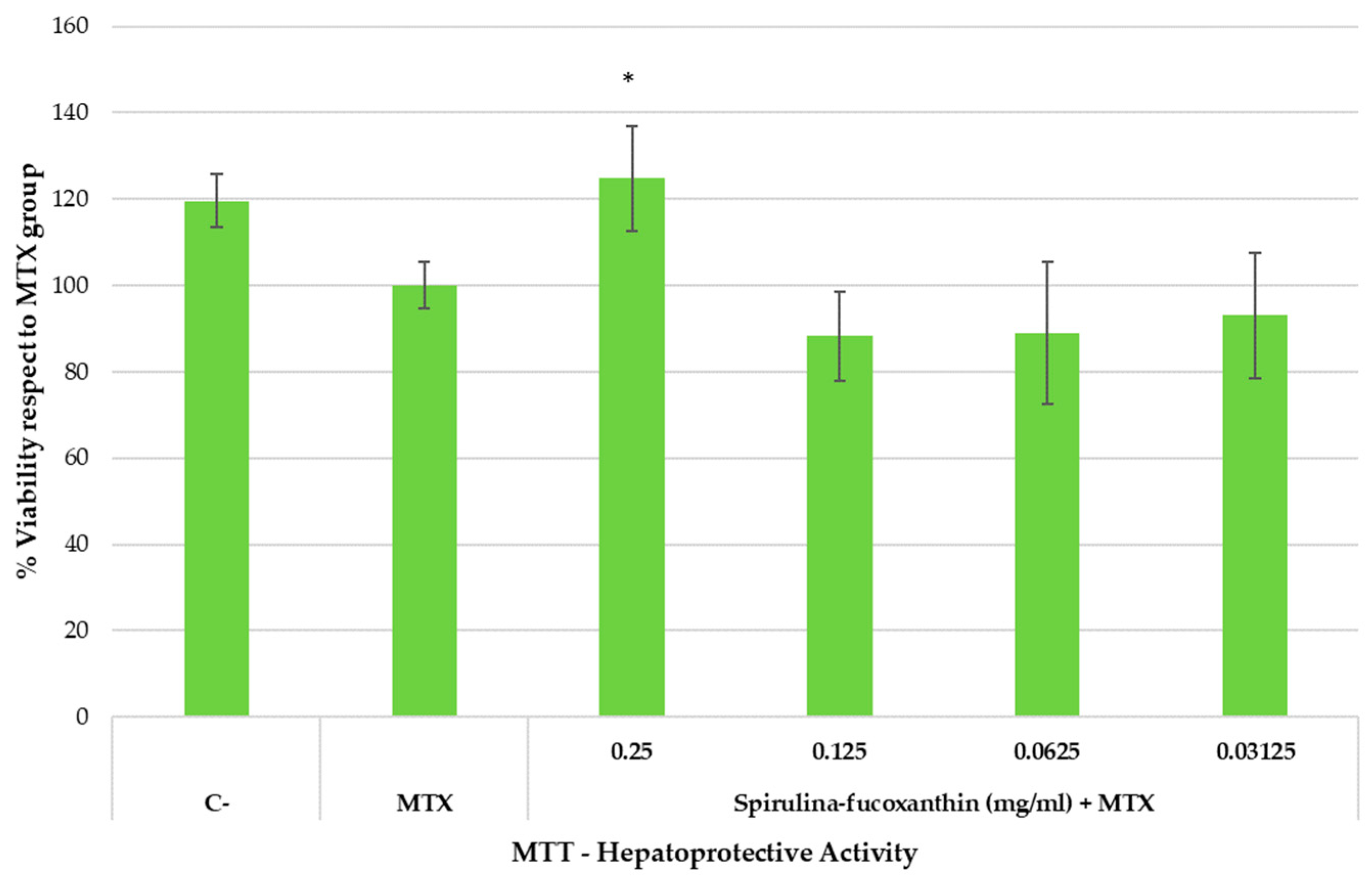
| Product | Company | Serving Size | DSLD Identification |
|---|---|---|---|
| BRI Nutrition Fucoxanthin | BR International, LLC. (Dallas, USA) | 5 mg, up to 4 capsules a day for a total daily amount of 20 mg | 219,005 |
| Life Extension Fucoxanthin-Slim | Quality Supplements and Vitamins, Inc. (FL, USA) | 200 mg Xanthigen blend of Wakame fucoxanthin extract and pomegranate oil punicic acid extract. One soft gel, 3 times daily = 600 mg total serving level | 64,368 |
| BioRhythm Ultra Lean FX | BioRhythm-ADS (Pittsburgh, USA) | 150 mg, one capsule twice daily for a total daily amount of 300 mg | 13,412 |
| Dr. Mercola Premium Supplements Biothin with Irvingia and Fucoxanthin | Mercola Health Resources, LLC. (FL, USA) | 30 mg fucoxanthin daily | 175,720 |
| FucoZan | Vita Logic (UT, USA) | Capsule blend containing 5 mg of fucoxanthin, taken 3 times daily for a total daily amount of 15 mg fucoxanthin | 3287 |
| MaritzMayer Laboratories the Original FucoXanthin Formula 1332 | MaritzMayer Laboratories (GA, USA) | 5 mg fucoxanthin per capsule at up to 4 capsules per day, for a total daily amount of 20 mg fucoxanthin | 31,716 |
| Vitabase Fucoxanthin Plus | Vitabase.com (GA, USA) | 5 mg fucoxanthin per capsule, taken 3 times daily for a total daily amount of 15 mg fucoxanthin per day | 5990 |
| Component | Quantity (g/L) |
|---|---|
| NaNO3 | 100 |
| MnCl2·4H2O | 0.36 |
| H3BO3 | 33.6 |
| MgNa2EDTA·H2O | 45 |
| NaH2PO4·H2O | 20 |
| FeCl3·6H2O | 1.3 |
| Trace metal solution | 1 mL |
| ZnCl2 | 21 |
| (NH4)6Mo7O24 | 9 |
| CuSO4·5H2O | 20 |
| CoCl2·6H2O | 20 |
| Trials | Results | ||
|---|---|---|---|
| Value | Units | Method | |
| SiO2 | 2.36 | mg SiO2/Kg | ITEM151: AAS 1 |
| Al2O3 | 533 | mg Al2O3/Kg | ITEM273: ICP-MS |
| Fe2O3 | 2.02 | mg Fe2O3/Kg | ITEM250: OIDA-ICP-MS |
| SO3 | 2.22 | % | UNE EN 1744-1 |
| CaO | 38.10 | mg CaO/Kg | ITEM273: ICP-MS |
| MgO | 12.68 | mg MgO/Kg | ITEM273: ICP-MS |
| Na2O | 42.80 | mg Na2O/Kg | ITEM273: ICP-MS |
Disclaimer/Publisher’s Note: The statements, opinions and data contained in all publications are solely those of the individual author(s) and contributor(s) and not of MDPI and/or the editor(s). MDPI and/or the editor(s) disclaim responsibility for any injury to people or property resulting from any ideas, methods, instructions or products referred to in the content. |
© 2023 by the authors. Licensee MDPI, Basel, Switzerland. This article is an open access article distributed under the terms and conditions of the Creative Commons Attribution (CC BY) license (https://creativecommons.org/licenses/by/4.0/).
Share and Cite
Delgado-Ramallo, J.F.; Ceballos-Cuevas, L.; Álvarez-Gil, M.; Suárez-Montes, D.; Casado-Bañares, V.; Goñi-de-Cerio, F.; Rodríguez, E. Phaeodactylum tricornutum as Fucoxanthin Biofactory Model and Hepatoprotective Effect of Encapsulated Spirulina and Fucoxanthin. Appl. Sci. 2023, 13, 7794. https://doi.org/10.3390/app13137794
Delgado-Ramallo JF, Ceballos-Cuevas L, Álvarez-Gil M, Suárez-Montes D, Casado-Bañares V, Goñi-de-Cerio F, Rodríguez E. Phaeodactylum tricornutum as Fucoxanthin Biofactory Model and Hepatoprotective Effect of Encapsulated Spirulina and Fucoxanthin. Applied Sciences. 2023; 13(13):7794. https://doi.org/10.3390/app13137794
Chicago/Turabian StyleDelgado-Ramallo, Jesús Fidel, Laura Ceballos-Cuevas, María Álvarez-Gil, David Suárez-Montes, Víctor Casado-Bañares, Felipe Goñi-de-Cerio, and Eduardo Rodríguez. 2023. "Phaeodactylum tricornutum as Fucoxanthin Biofactory Model and Hepatoprotective Effect of Encapsulated Spirulina and Fucoxanthin" Applied Sciences 13, no. 13: 7794. https://doi.org/10.3390/app13137794
APA StyleDelgado-Ramallo, J. F., Ceballos-Cuevas, L., Álvarez-Gil, M., Suárez-Montes, D., Casado-Bañares, V., Goñi-de-Cerio, F., & Rodríguez, E. (2023). Phaeodactylum tricornutum as Fucoxanthin Biofactory Model and Hepatoprotective Effect of Encapsulated Spirulina and Fucoxanthin. Applied Sciences, 13(13), 7794. https://doi.org/10.3390/app13137794






